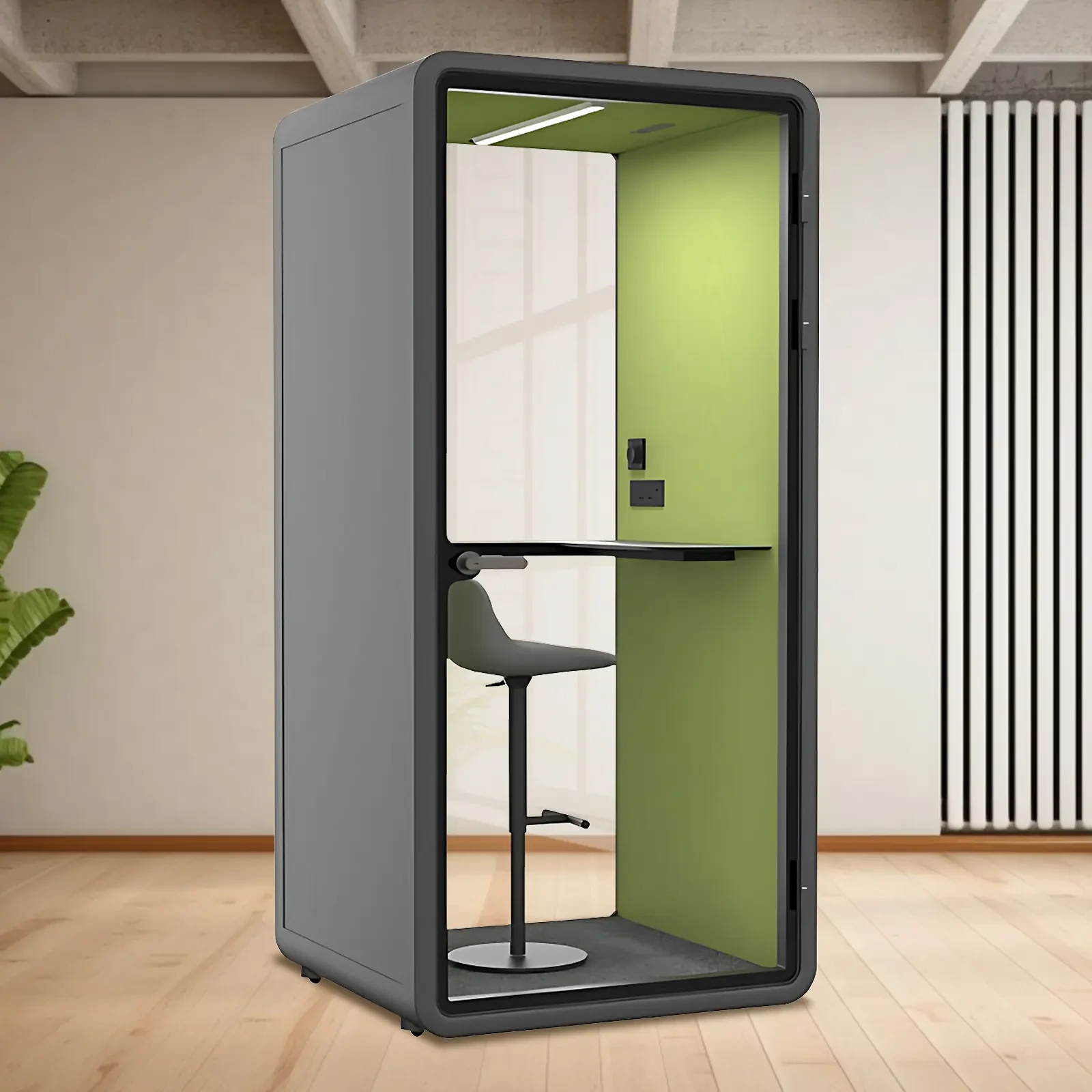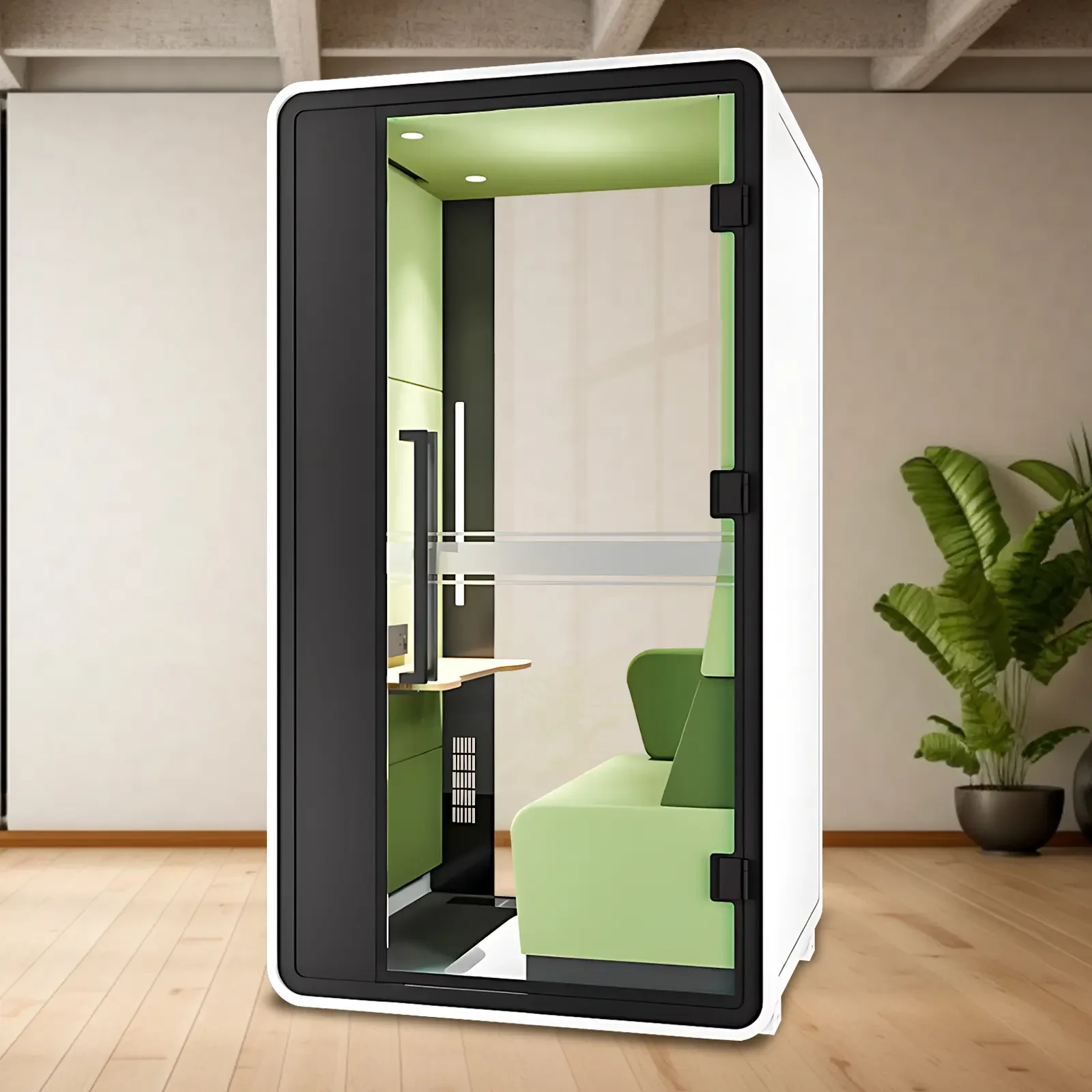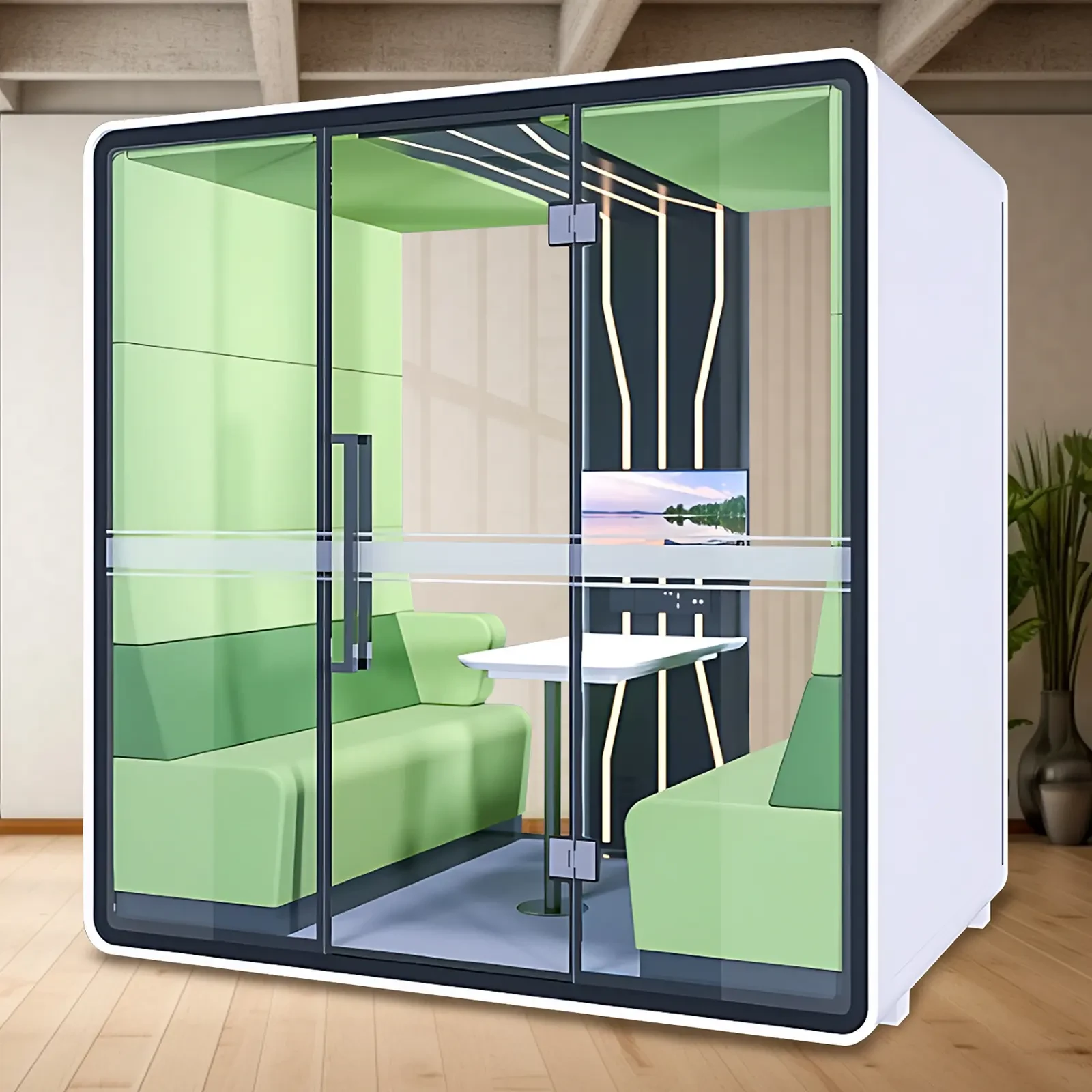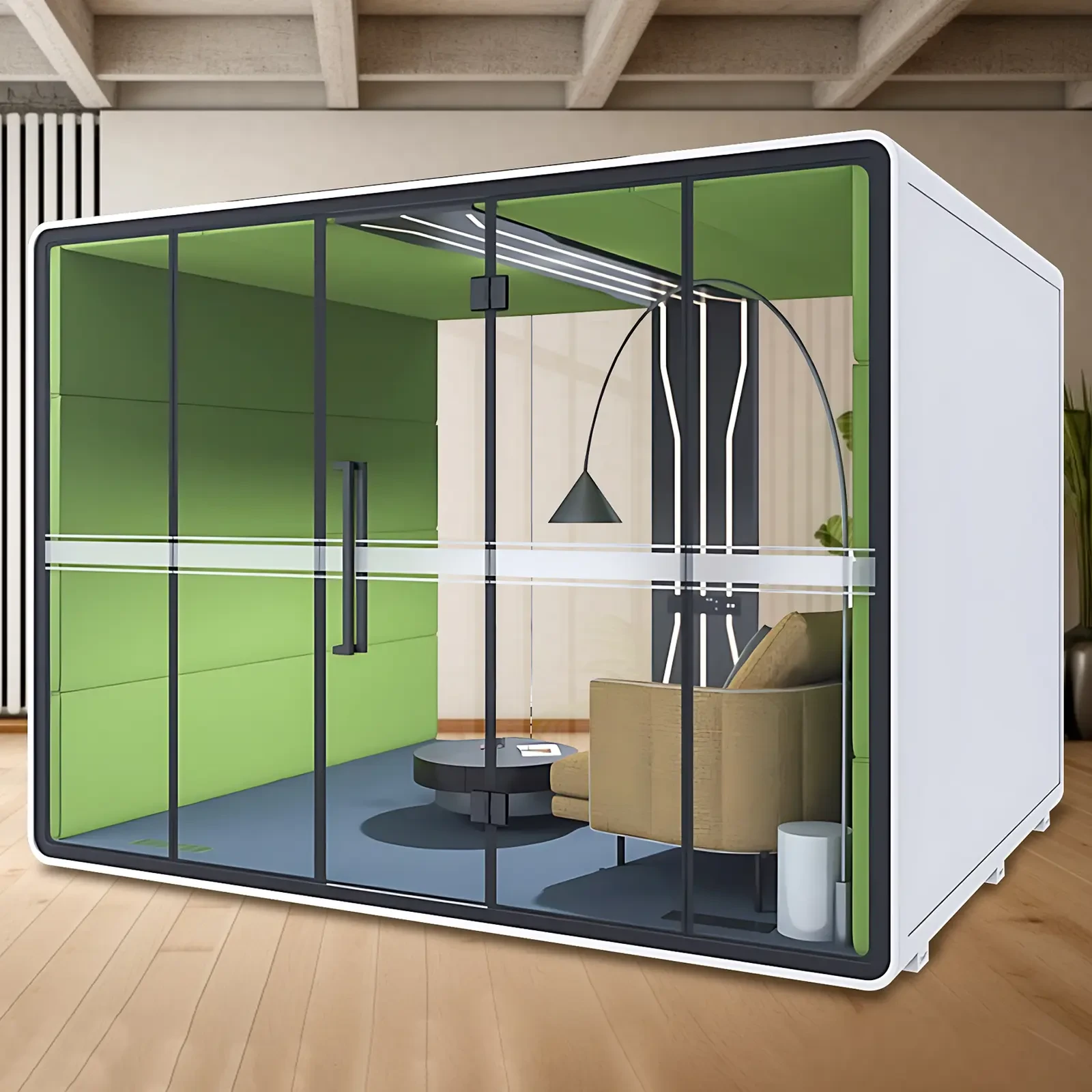In today's fast-paced, high-pressure learning environment, students' needs for learning space are becoming increasingly diverse. Traditional learning modes, whether studying alone or discussing in groups, are often limited by external noise interference and it is difficult to achieve the best learning state. With the advancement of educational concepts and the upgrading of campus facilities, soundproof cabins, as an innovative learning space solution, are gradually entering campuses to meet students' urgent needs for efficient and focused learning environments. This article will explore in depth the application of individual learning and team discussion in soundproof cabins, and how soundproof cabins, with their unique advantages, have become a key factor in optimizing campus educational facilities and enhancing campus influence.
Individual learning: Quiet time in soundproof cabins
For students who prefer to study alone, a quiet and undisturbed environment is a prerequisite for improving learning efficiency. The original intention of the design of the soundproof cabin is to isolate external noise, whether it is a crowded corridor or the noise of construction in the distance, it can be effectively isolated. The cabin is usually equipped with comfortable seats, good lighting systems, and necessary power and network interfaces, providing students with an independent and quiet personal learning space. In such an environment, students can focus more on the task at hand, whether reviewing courses, writing papers, or doing in-depth reading, they can achieve twice the result with half the effort. In addition, the privacy of the soundproof cabin also provides students with a space for self-reflection, which helps to cultivate independent thinking and problem-solving skills. Soundproof cabin silent cabin
Team discussion: a new world of efficient collaboration
However, learning is not always a lonely journey. Team discussion and cooperative learning are also important ways to acquire knowledge and stimulate innovative thinking. Although the soundproof cabin is small, it can accommodate a small discussion group, providing team members with a private and efficient communication environment. Here, students can express their opinions freely without being disturbed by the outside world, discuss problems together, and promote the collision and integration of ideas. The walls in the soundproof cabin are often made of sound-absorbing materials to ensure that the sound of the discussion will not leak out, which not only protects the privacy of the discussion but also avoids interference with other learning spaces. This design makes the soundproof cabin an ideal place for team collaboration activities such as group discussions and project planning, greatly improving learning efficiency and quality.
Diverse application scenarios: from study rooms to reading booths
The flexibility of the soundproof cabin is not only reflected in its ability to meet the needs of different learning modes, but also in its wide range of application scenarios. In addition to being used as a study room and discussion room, the soundproof cabin can also be transformed into a reading booth, language training room, etc. to meet the special needs of language learning and artistic creation. For foreign language learners, a quiet reading environment can help them better imitate pronunciation, practice oral English, and improve language skills. In the field of art, the soundproof cabin provides a practice space for performing arts such as music and recitation that is not disturbed by the outside world, which helps artists immerse themselves in creation and polish their works.
Optimize campus education facilities and enhance campus influence
The introduction of the soundproof cabin is not only an innovation of traditional learning space, but also a comprehensive optimization of campus education facilities. With its unique advantages, it solves the problem of noise interference in student's learning process and improves learning efficiency and quality. At the same time, the diverse application scenarios of the soundproof cabin also enrich the campus cultural life and meet the diverse learning needs of students. These changes will undoubtedly enhance students' sense of belonging and satisfaction with the campus and further enhance the overall attractiveness of the campus.
More importantly, as a microcosm of educational modernization, the soundproof cabin demonstrates the campus' pursuit and practice of an innovative learning environment. This forward-looking educational concept can not only attract more outstanding students to join, but also enhance the school's social image and influence, laying a solid foundation for the school's long-term development.
Conclusion
In summary, the soundproof cabin has become a powerful driving force for optimizing campus educational facilities and enhancing campus influence with its unique sound insulation effect, diverse application scenarios, and satisfaction of students' diverse needs. It not only provides students with an efficient and focused learning environment but also injects new vitality into the prosperity and development of campus culture. With the continuous advancement of educational technology and the continuous updating of learning concepts, we have reason to believe that the soundproof cabin will play a more important role in future campus construction and become an important bridge connecting tradition and modernity, individuals and collectives, learning, and innovation. Let us look forward to what surprises and changes will be brought about by the new era of campus learning led by the soundproof cabin.

 USD
USD
 GBP
GBP
 EUR
EUR






